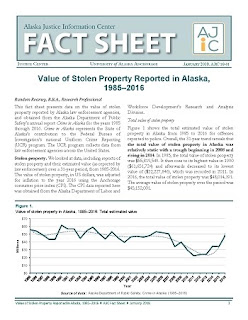 |
| Deputy Attorney General Robert "Rob" Henderson |
Robert "Rob" Henderson, B.A. Justice 1998, J.D. 2001, never intended to go to law school until UAA Justice Professor Lisa Rieger pushed him in that direction. "I owe a lot to Lisa," Henderson says. "But for her I would not have gone to law school."
Henderson, Deputy Attorney General for the Criminal Division, works directly under Attorney General Jahna Lindemuth and oversees more than 100 prosecutors throughout Alaska.
Born and raised in Southcentral Alaska, Henderson's father is a retired colonel in the Alaska State Troopers. Henderson worked full time while attending UAA and graduated in 1998 with a B.A. in Justice and minor in Psychology.
Henderson not only credits Prof. Rieger with steering him toward law school, he also found that "the way she taught her classes [left him] very prepared for law school."
Her classes - including criminal procedure and substantive criminal law - "were a bear, but very similar to the style of learning practiced in law school," he added. (Rieger left the Justice Center in 2003 and is now Chief Legal Officer for Cook Inlet Trial Council)
Henderson attended the University of Montana Law School and served as an editor on the law review. Graduating in 2001, he returned to Alaska and clerked for Court of Appeals Judge Robert Coates. Following his clerkship, he went into private practice doing commercial litigation with Jermain, Dunnagan & Owens from 2002-2005. Private practice, though, did not appeal to Henderson.
"I felt I needed to focus on making our community a better and safer place," he said.
In 2005, he joined the Anchorage District Attorney's office and in 2010 became a supervisor in Violent Crimes. In January 2013, he became Chief Assistant Attorney General in the Office of Special Prosecutions and Appeals.
Last March, Henderson became Deputy Attorney General for the Criminal Division. It's an administrative job that makes him part of a team working on large policy decisions. Though he misses the hands on of prosecuting crimes and trial work, the new opportunities of his position are very rewarding.









